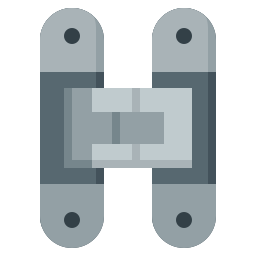
Hinges in Laptop Hardware Components: A Comprehensive Explanation
Hinges are an essential component of laptop hardware, serving as a crucial mechanical element that connects the display panel to the main body (keyboard base) of the laptop. Despite being a small part of the overall structure, hinges play a significant role in both the functionality and durability of the device. Understanding the design, application, advantages, disadvantages, and potential alternatives of laptop hinges helps in evaluating the overall build quality and user experience of a laptop.
Definition and Functionality of Hinges in Laptops
Hinges are pivoting mechanisms that allow the screen of the laptop to open, close, and stay at different angles according to user preference. These components are typically made from metals such as stainless steel or zinc alloy, due to their strength and resistance to wear and tear. Some laptops may also incorporate polymer materials or composite metals to reduce weight while maintaining durability.
Main Applications of Laptop Hinges
Supporting the display screen by securely attaching it to the base unit
Providing flexibility to adjust the screen angle for better viewing comfort
Allowing the device to be closed for portability and protection of internal components
Enabling specific design functionalities such as 360-degree rotation in convertible laptops
Helping maintain screen stability during use, especially in touch-enabled devices
Minimizing physical stress on display cables that connect the motherboard to the screen
Assisting in heat dissipation when designed with airflow considerations
Improving the overall aesthetic appeal through hidden or stylized hinge designs
Types of Laptop Hinges
Standard clamshell hinges: These are found in most traditional laptops and allow basic open-close functionality.
Dual-axis hinges: These provide more flexible movement and are commonly used in 2-in-1 or convertible laptops.
Centralized hinges: Positioned in the middle for design balance and used in ultrabooks.
Extended hinges: Provide additional strength and are typically used in rugged or business-class laptops.
Hidden or seamless hinges: Designed to be invisible for aesthetic purposes while maintaining functionality.
Advantages of Quality Laptop Hinges
Enhances the structural integrity of the laptop
Offers a smooth and consistent motion during opening and closing
Reduces long-term wear on internal display cables and connectors
Improves user experience by allowing stable screen positioning
Contributes to device longevity by preventing lid misalignment
Supports innovation in laptop designs such as 360-degree rotation
Disadvantages and Common Issues
Hinges may loosen or wear out over time with repeated use
Poorly designed or low-quality hinges can lead to screen wobble or breakage
Hinges can become stiff or noisy due to dust, wear, or manufacturing defects
Malfunctioning hinges may damage display cables or cause misalignment
Repairs or replacements can be costly if the hinge is integrated into the chassis
Cost and Availability
The use of hinges in laptops is a standard hardware feature and is included in the manufacturing cost of the device. There is no separate usage fee for laptop hinges. However, if a hinge becomes damaged or breaks due to misuse or wear, repairing or replacing it may involve additional cost depending on the laptop model and warranty status. Generally, hinge repair costs vary widely and may include labor charges, especially if chassis disassembly is required.
Comparison with Alternative Mechanisms
While traditional hinges dominate the market, some manufacturers experiment with magnetic or friction-based mechanisms. These alternatives aim to reduce mechanical complexity but often fall short in terms of durability and screen stability. High-end business laptops may feature reinforced or specially engineered hinges that offer longer life cycles and smoother motion. In contrast, entry-level models may use simpler designs that are more prone to wear.
Usage in Different Laptop Categories
Business laptops often include reinforced hinges for extended durability
Gaming laptops are equipped with robust hinges to support heavier screens
Ultrabooks focus on lightweight and slim hinge designs for portability
Convertible and 2-in-1 laptops rely on multi-directional hinges for touch interaction and flexibility
Rugged laptops feature industrial-grade hinges to withstand rough environments
Conclusion
Laptop hinges are a fundamental yet often overlooked hardware component that plays a critical role in the usability, reliability, and structural design of portable computers. Their function extends beyond simply allowing the screen to open and close, contributing to both ergonomics and device longevity. Quality hinges ensure smooth operation, protect internal components, and enhance the overall user experience. While they come standard with all laptops and do not incur additional usage fees, their importance becomes evident when they fail or underperform. Therefore, attention to hinge design and durability is essential when selecting a laptop, particularly for users who rely on frequent opening and closing or demand extended device life.












